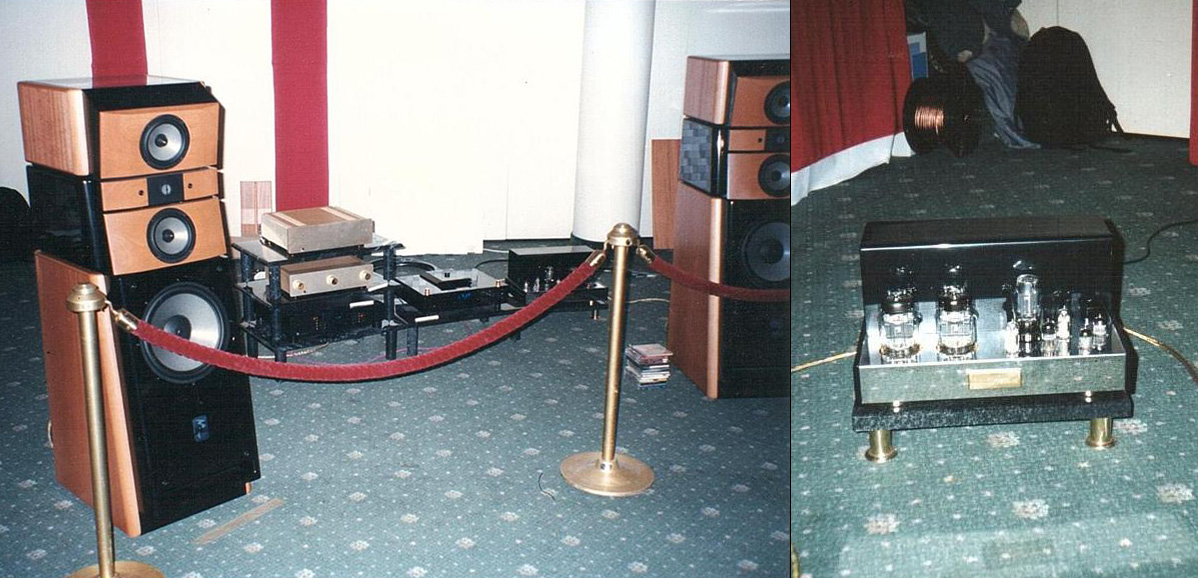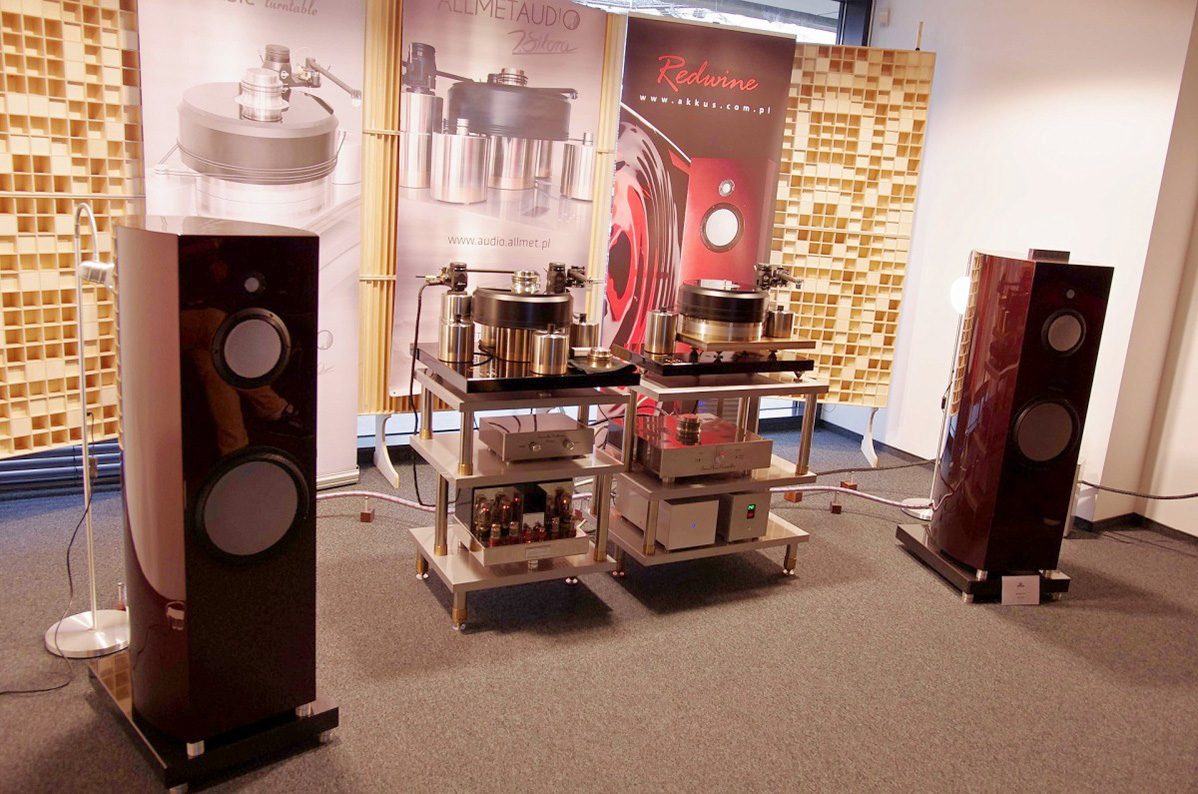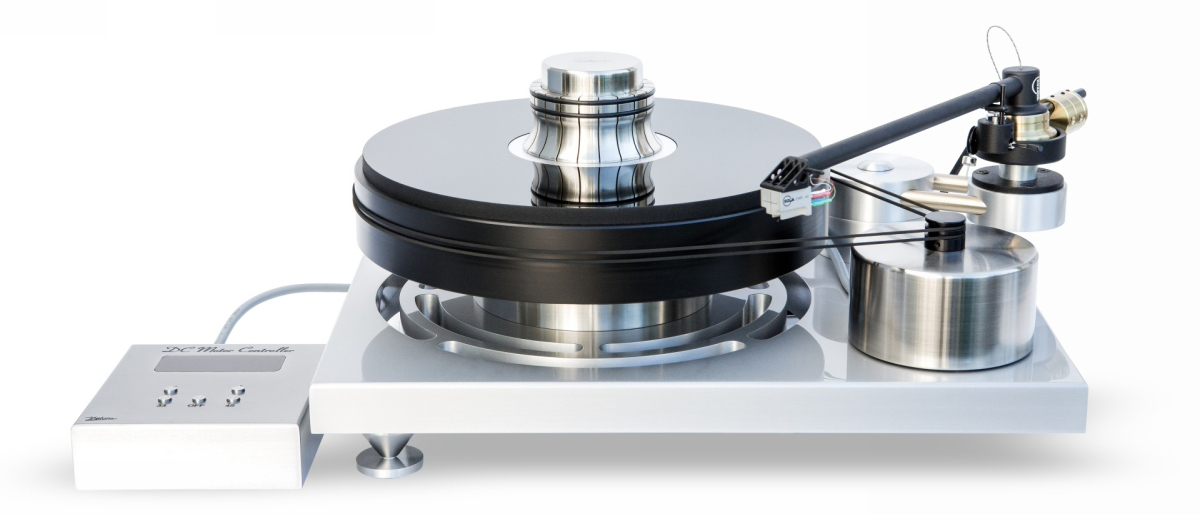 |
|
|
|
 |
This review first appeared in January 2017 on HifiKnights.com. By request of the manufacturer and permission of the author, it is here syndicated to reach a broader audience. As is customary for our own reviews, the writer's signature at review's end shows an e-mail address should you have questions or wish to send feedback. All images contained in this piece are the property of Marek Dyba or J.Sikora - Ed.
|
 |
Reviewer: Marek Dyba
Analog sources: J.Sikora Basic turntable with Schroeder CB tonearm and AirTight PC 3 cartridge, ESE Labs Nibiru and GrandiNote Celio mk IV phonostages
Preamplifier: Modwright LS100
Amplifiers: Modwright KWA100SE, Audia Flight FLS-4
Loudspeakers: Hansen Audio The Knight 2, Ubiq Audio Model One
Interconnects: 聖Hijiri HGP-10R "Million", LessLoss Anchorwave
Speaker cable: LessLoss Anchorwave
Power cords: LessLoss DFPC Signature, Gigawatt LC-3
Power delivery: ISOL-8 Substation Integra, Gigawatt PF-2 mk2
Equipment racks: Base VI in main system, Rogoz Audio 3RP3-BBS in analogue system
Anti-vibration accessories: Rogoz Audio SMO40 and CPPB16, Franc Audio Accessories Wood Block Slim platforms; Rogoz Audio BW40MKII and Franc Audio Accessories Ceramic Disc Slim Foot
Retail prices: €6'000, add €160 for glass mat, €550 for clamp, €550 for upgraded power supply
|
 |
For almost a year now I have been the proud owner of a Janusz Sikora turntable called The Standard. Until recently, it was the less expensive of two models offered by this Polish company. Their flagship was called The Reference. During the Audio Video Show 2016 in Warsaw though, an entry-level model premiered which was simply named The Initial. Just before the Show I had a chance to audition and assess this interesting novelty. Here are my findings.
|
 |
Those who were into hifi 20 years ago already might remember the Burdiak-Sikora tube amplifiers quite popular in Poland at the time. These were surely different times when virtually nobody had access to Internet yet most audiophiles at least recognized the brand if for no other reason than the presentation held during the Audio Show 1997 with mono Burdiak-Sikora amplifiers driving the famous Focal Utopia loudspeakers.
|
 |
|
|
|
|
| Somewhat later the cooperation between these two designers fell apart and for many years we lost sight of Janusz Sikora. A few years ago, rumors started that he was back, this time with turntables branded J.Sikora. At first it was difficult to find any specific information about them. They were almost exclusively built just for friends of the designer. I managed to unearth some photos on the web only to see an interesting fact: Sikora's decks were often coupled to Trans-Fi tangential tonearms, exactly the same as I'd reviewed then purchased for personal use. That told me that we had something in common: the same taste in tonearms. I later learnt that Mr. Sikora started using this arm after reading my review.
|
 |
As he subsequently shared, it was happy and proud owners of his decks who persuaded him to participate in the 2014 Audio Show in Warsaw and present his creations to the public at large. Attendees who visited the room couldn't believe that it was possible to make such well-finished superb looking and sounding devices in our home country of Poland. Design, build quality and finish were astonishing and by no means accidental. On one hand some influences or inspiration taken from other well-known competitors were quite obvious. But then it is virtually impossible to avoid those completely. On the other hand, J.Sikora introduced some proprietary solutions and exotic materials and the quality was simply remarkable, comparable with any other top high-end product of its kind from the most industrialized of nations. It was difficult to assess performance based on listening at a show but it was still clear to me that here was huge potential.
One of the biggest problems small manufacturers face not just in Poland is to produce at proper quality, then sustain it with a chain of parts and subassembly suppliers. In most cases, no matter whether the company makes turntables, loudspeakers, amplifiers or some vibration-control elements, it must rely on at least some cooperation. Finding those able to offer workmanship and labor at the proper quality is very difficult. I've heard the same time and again from many domestic manufacturers [I've heard the same from multiple makers in even Switzerland – Ed]. Yet finding the right vendors and machinists isn't the end of it. After a few deliveries, the quality of parts suddenly worsens. The exact reasons vary from case to case but the incidents themselves occur regularly. When it happens, it might be possible to convince the supplier to raise quality again, usually at renegotiated higher pricing. The other option is to go look for a new supplier only to potentially start the cycle of good quality turning bad all over again.
|
 |
Why do I mention that? Because this global problem nearly doesn't factor in Mr. Sikora's business. The vast majority of his turntable parts are made in-house because his main business, the one which sustains his livelihood, specializes in metal parts and machining. The main headache of this Lublin-based manufacturer is therefore finding time to momentarily switch production to the parts needed for turntables. For now Mr. Janusz manages, hence consistency of build and finish quality are guaranteed and, dare I say, almost unparalleled. There is another huge advantage to this type setup. It's the chance to experiment with new materials, shapes and so forth. Where others must commission one-up prototypes or samples with their outside suppliers, Mr. Janusz executes his own R&D in-house. It still costs him money but surely far less than when external contractors must be used. The presentation of the Standard Line turntable made of bronze during the Audio Video Show 2015 was the result of one such experiment - as Mr. Janusz explained, very successful too. The problem in this case was the cost of the material. It made that bronze version not only more expensive than the original but it would cost more even than the range-topping Reference deck to make actual sales unlikely.
Due to J.Sikora's lower R&D and production costs plus the particular approach of an owner who treats turntable manufacture more as a hobby than means to make money, both the Standard and Reference turntables can sell at relatively attractive prices. Even though in principle I disagree with current hifi trends pushing prices into the stratosphere, I told Janusz more than once that he sold his turntables too cheaply compared to the competition. Whilst I knew that they were not cheap in any absolute sense, price is always relative and ought to adequately reflect quality and performance. Against that rule, his Standard and Reference Line decks were, to put it mildly, priced very attractively.
|
 |
|
|

|
|